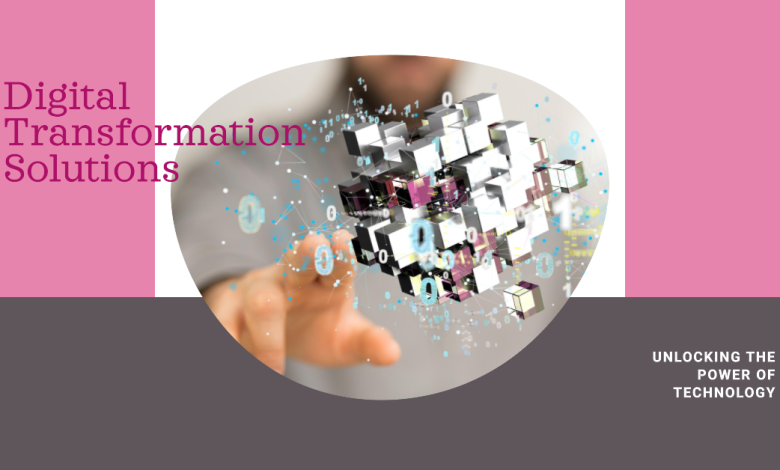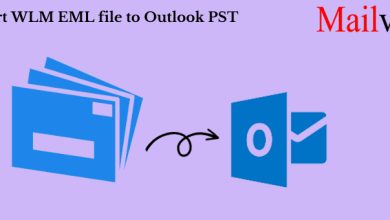Unlocking Success: A Comprehensive Guide to Digital Transformation Solutions

In today’s rapidly evolving business landscape, embracing digital transformation is no longer a choice but a necessity. It’s the key to staying competitive, enhancing customer experiences, and achieving operational excellence. In this comprehensive guide, we will delve deep into the world of digital transformation solutions. From understanding the basics to exploring advanced strategies and real-world examples, you’ll gain valuable insights to embark on a successful digital transformation journey.
What Are Digital Transformation Solutions?
At its core, digital transformation is the integration of digital technology into all aspects of an organization, fundamentally changing how it operates and delivers value to customers. Digital transformation solutions encompass a wide range of technologies and strategies that enable this transformation. These solutions are designed to streamline processes, enhance decision-making, and foster innovation.
Digital transformation solutions can encompass a variety of technologies, such as cloud computing, Internet of Things (IoT), artificial intelligence (AI), data analytics, and more. These technologies serve as the building blocks for creating a digitally driven organization. The goal is to leverage these tools to improve efficiency, agility, and customer-centricity.
Why Digital Transformation Solutions Matter
In today’s hyper-connected world, customers have higher expectations than ever before. They demand seamless online experiences, instant access to information, and personalized interactions. To meet these demands, organizations must adapt, and that’s where digital transformation solutions come into play.
Digital transformation solutions matter for several reasons:
- Competitive Advantage: Companies that embrace digital transformation gain a significant competitive advantage. They can respond to market changes faster, identify new opportunities, and outperform competitors.
- Enhanced Customer Experiences: Digital transformation allows organizations to create personalized and seamless customer experiences. This, in turn, leads to increased customer loyalty and satisfaction.
- Operational Efficiency: Streamlined processes and automation through digital solutions lead to improved operational efficiency. This means reduced costs and higher productivity.
- Data-Driven Insights: Digital transformation solutions enable data collection and analysis on a massive scale. This data can be used to make informed decisions, identify trends, and drive innovation.
Key Components of Digital Transformation Solutions
Successful digital transformation requires a strategic approach, and it involves multiple components. Here are some key elements to consider:
3.1. Cloud Computing
Cloud computing provides scalable and cost-effective infrastructure for digital transformation. It allows organizations to store, manage, and access data and applications from anywhere, facilitating remote work and collaboration.
3.2. Artificial Intelligence (AI) and Machine Learning
AI and machine learning technologies enable automation, predictive analytics, and intelligent decision-making. They can be applied in various domains, from customer service chatbots to supply chain optimization.
3.3. Internet of Things (IoT)
IoT devices collect and transmit data, offering real-time insights into operations. This is invaluable for industries like manufacturing, where monitoring equipment performance can prevent downtime.
3.4. Data Analytics
Data analytics tools help organizations make sense of the vast amount of data they collect. This includes descriptive analytics, predictive analytics, and prescriptive analytics to drive decision-making.
3.5. Cybersecurity
As digital transformation increases the attack surface, robust cybersecurity measures become essential. Protecting sensitive data and ensuring compliance are critical aspects of any digital transformation strategy.
Crafting a Digital Transformation Strategy
Before diving into digital transformation, organizations must create a well-defined strategy. Here’s a step-by-step approach:
4.1. Define Clear Objectives
Start by identifying your organization’s specific goals for digital transformation. What do you aim to achieve? Whether it’s improving customer satisfaction, reducing costs, or entering new markets, clear objectives are crucial.
4.2. Assess Current Capabilities
An honest assessment of your organization’s current technology and processes is essential. This helps identify gaps and areas that require improvement.
4.3. Technology Selection
Choose the digital transformation solutions that align with your objectives. Consider factors like scalability, integration capabilities, and long-term viability.
4.4. Develop a Roadmap
Create a roadmap that outlines the timeline and milestones for your digital transformation journey. This provides a clear path for implementation and ensures everyone is on the same page.
4.5. Employee Training and Change Management
Digital transformation often requires employees to adapt to new technologies and processes. Provide training and support to help your team embrace the changes effectively.
Benefits of Digital Transformation Solutions
Digital transformation solutions offer a plethora of benefits that extend beyond the obvious. Here are some advantages that organizations can expect to realize:
5.1. Cost Savings
By optimizing processes and automating repetitive tasks, organizations can significantly reduce operational costs.
5.2. Improved Customer Insights
Digital transformation solutions provide valuable customer data, allowing organizations to tailor their products and services to meet customer needs more effectively.
5.3. Agility and Innovation
Digital transformation fosters a culture of innovation and adaptability. Organizations can respond quickly to market changes and experiment with new ideas.
5.4. Enhanced Decision-Making
Access to real-time data and analytics empowers better decision-making at all levels of the organization.
Real-World Examples of Digital Transformation
Let’s look at a few real-world examples of organizations that successfully leveraged digital transformation solutions:
6.1. Amazon
Amazon’s use of AI-driven recommendation engines and its extensive cloud infrastructure have revolutionized e-commerce and logistics.
6.2. Starbucks
Starbucks implemented mobile ordering and payment solutions, enhancing the customer experience and streamlining operations.
6.3. General Electric (GE)
GE’s adoption of IoT technology in its factories led to predictive maintenance, reducing downtime and saving millions.
Overcoming Challenges in Digital Transformation
While the benefits of digital transformation are clear, it’s not without its challenges:
7.1. Resistance to Change
Employees may resist changes to established processes and technologies. Effective change management is essential.
7.2. Data Security
The more digital data an organization collects, the greater the risk of security breaches. Robust cybersecurity measures are critical.
7.3. Integration Complexity
Integrating new digital solutions with existing systems can be complex and requires careful planning.
Section 8: Measuring Success in Digital Transformation
To gauge the success of your digital transformation efforts, it’s important to establish key performance indicators (KPIs) aligned with your objectives. Common KPIs include:
8.1. ROI (Return on Investment)
Calculating the return on investment helps determine if your digital transformation efforts are delivering value.
8.2. Customer Satisfaction
Monitoring customer feedback and satisfaction levels can indicate how well your digital transformation is meeting their needs.
8.3. Operational Efficiency
Track metrics such as process cycle time, error rates, and resource utilization to measure improvements in operational efficiency.
Conclusion – Embrace the Future with Digital Transformation Solutions
In today’s digital age, organizations must adapt and thrive amidst constant change. Digital transformation solutions are the key to staying ahead of the curve, delivering exceptional customer experiences, and achieving long-term success. By understanding the components, crafting a strategic plan, and embracing innovation, your organization can unlock the full potential of digital transformation. Start your journey today and embrace the future with confidence.
also know about High Quality PET Preform Mould and Paint Bucket Mould



